Eyes that look droopy can create the impression that you’re tired,lacking energy, or always sleepy. Droopy eyelids can also affect your vision. I’ll discuss how I evaluate and help people who come in concerned about droopy eyelids every day in my practice.
I perform a range of cosmetic eyelid procedures as well as complex reconstructive and revision eyelid surgery. I routinely perform eyelid procedures that are not usually performed by general plastic or cosmetic surgeons such as eyelid ptosis correction; as well as surgery for complications of eyelid surgery performed by other doctors such as eyelid retraction, and ectropion.
What Causes a Droopy Eyelid?
A very common cause of a droopy appearance is the presence of heavily hooded eyelids. Hooded eyelids are seen when the upper eyelid skin becomes redundant with age and sun exposure. The medical term for redundant eyelid skin is dermatochalasis. In some situations where the eyelid hooding is mild, I use botulinum toxin to relax the brow depressor muscles, this is often referred to as a Botox brow lift.
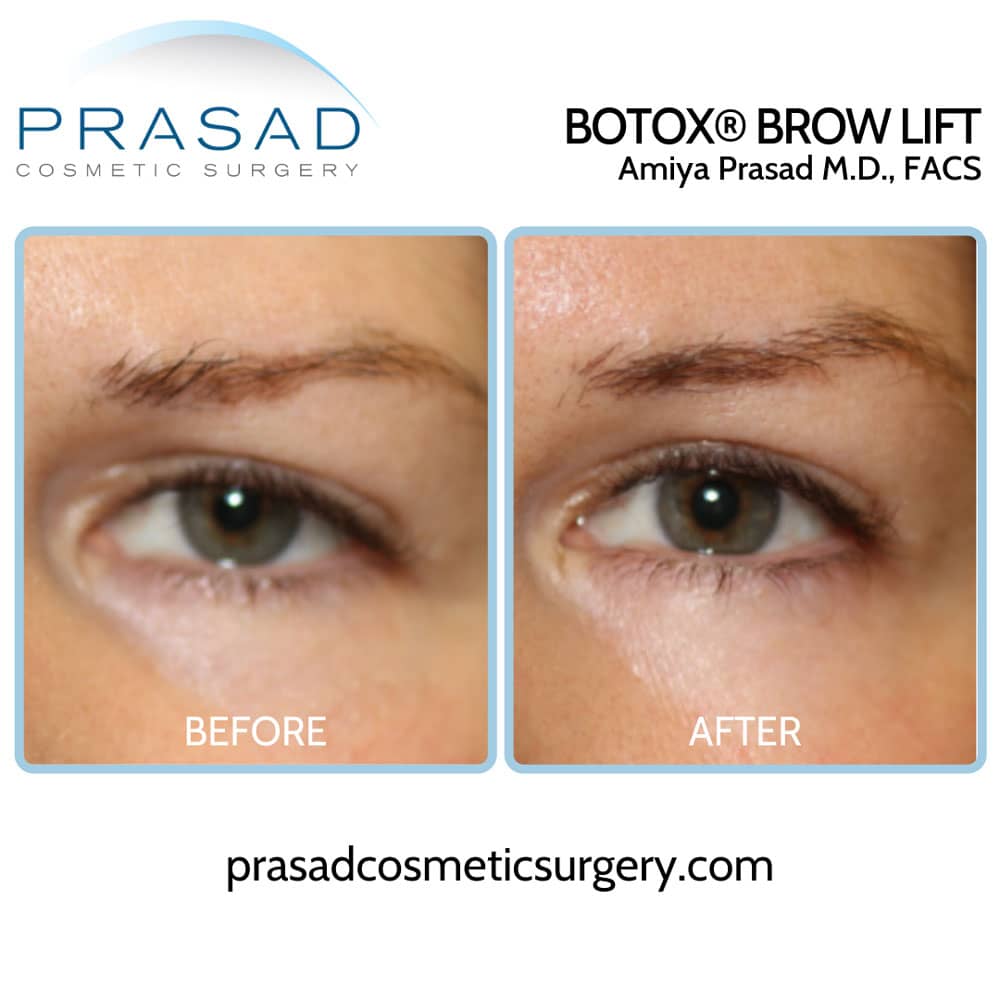
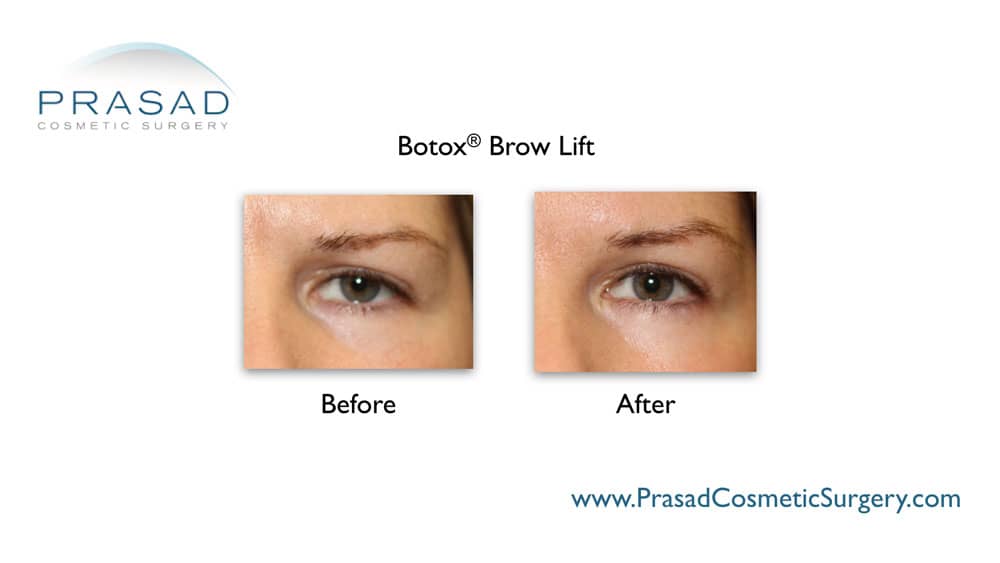
When someone has relative skin redundancy resulting in hooded upper eyelids, I perform cosmetic upper eyelid surgery, also called upper eyelid blepharoplasty. This procedure is customized to address redundant skin, soft tissue, and fat.
Although upper eyelid surgery is performed by a variety of doctors, I cannot stress how deceptively complex this procedure is. I often laugh when a colleague uses a phrase like “it’s just a simple bleph”. It may be simple in their mind when you only perform this procedure in a limited way on a limited category of people.
In my practice, I have a wide range of patients whom I perform blepharoplasty for ranging from young Asians who want double eyelid surgery, to older people who need ptosis surgery and brow lifting surgery to fully address their droopy appearance. As a specialist in revision surgery, I can also attest to how much millimeters matter. A skin shortage after blepharoplasty can cause eye exposure and require skin graft surgery.

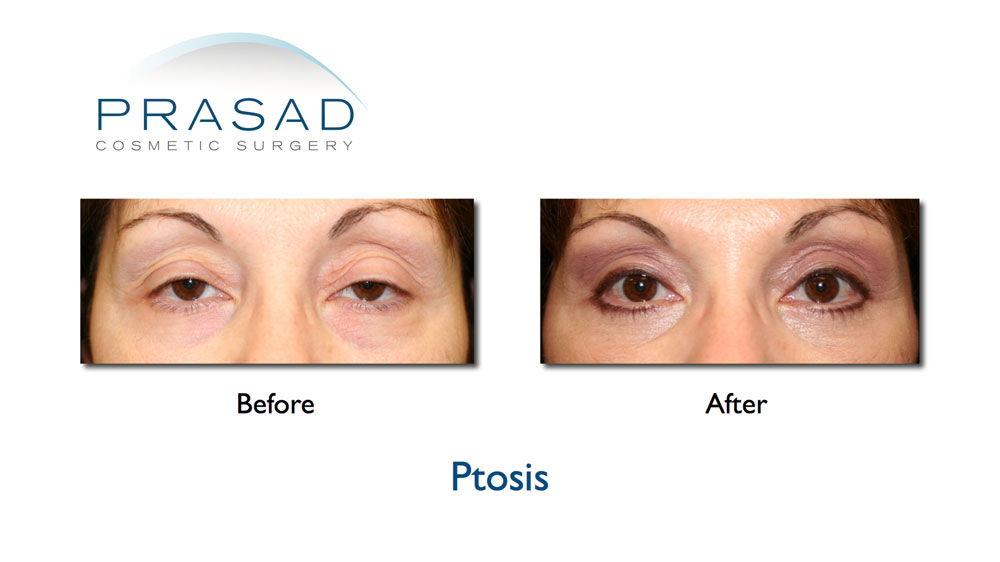
When a patient comes in concerned about drooping eyelids, I look for the presence of a condition called eyelid ptosis. Ptosis is a medical term to describe something that is drooping. Eyelid ptosis means that the upper eyelid margin is in a lower position than it should be. Ptosis is frequently seen in the presence of excess skin over the eyelids (dermatochalasis). It’s particularly important to distinguish if the ptosis is caused by the physical weight of the upper eyelid skin, or by the muscle which lifts the eyelid called the levator muscle, or a combination of the two.
I’ve observed that the presence of ptosis is frequently disregarded by general plastic surgeons. These patients often feel that they went through the trouble of having cosmetic eyelid surgery, but they still look very tired.
What Causes Ptosis?
The most common cause of ptosis in adults is the atrophy, thinning, or stretching of the tendon or aponeurosis of the muscle, which lifts the eyelid called the levator muscle.
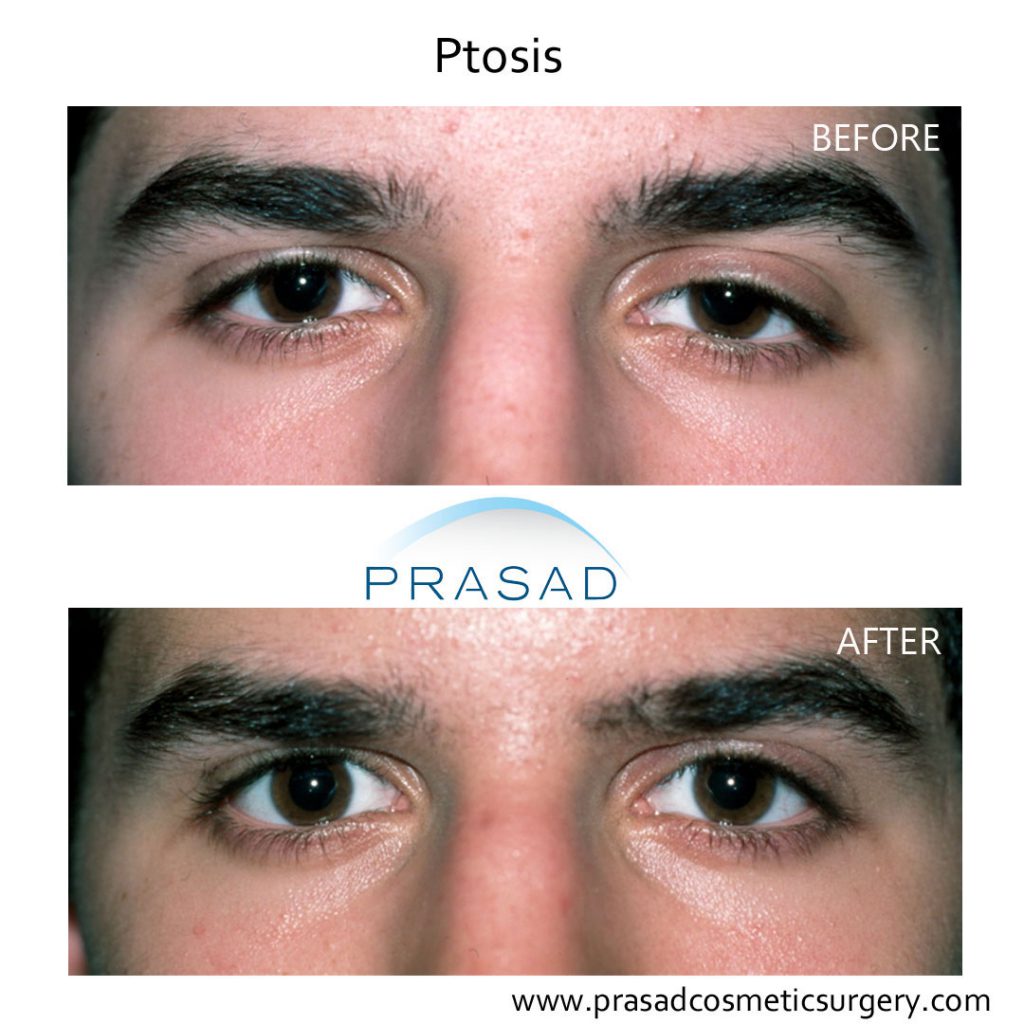
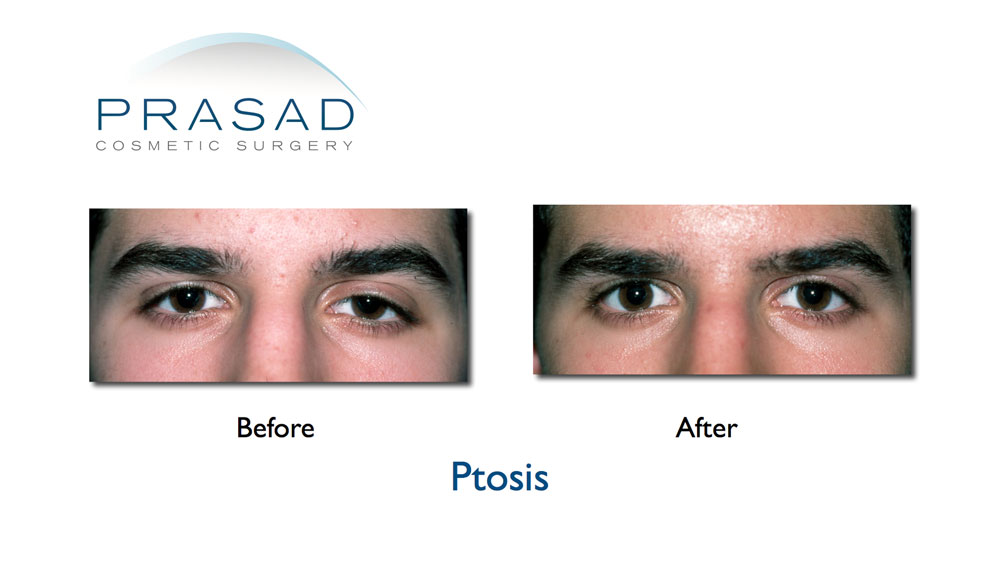
If I suspect a neurologic cause for eyelid ptosis, I refer my patient to a neuro-ophthalmologist for evaluation. You can also be born with ptosis, a condition called congenital ptosis.
A common cause of ptosis in adults is due to thinning or stretching of the levator muscle, which is referred to as involutional ptosis. The levator muscle can also be affected by trauma directly to the eyelid, as well as from swelling after trauma. As stated earlier, physical weight on the eyelid from the upper eyelid skin, and skin below the eyebrow can physically weigh the eyelid down causing what is categorized as “mechanical ptosis”.
How to Test for Ptosis?
I perform a ptosis evaluation to determine the eyelid height, and strength of the levator muscle. In addition, I perform other ophthalmologic measurements and examinations to ensure you have proper eye function after surgery.
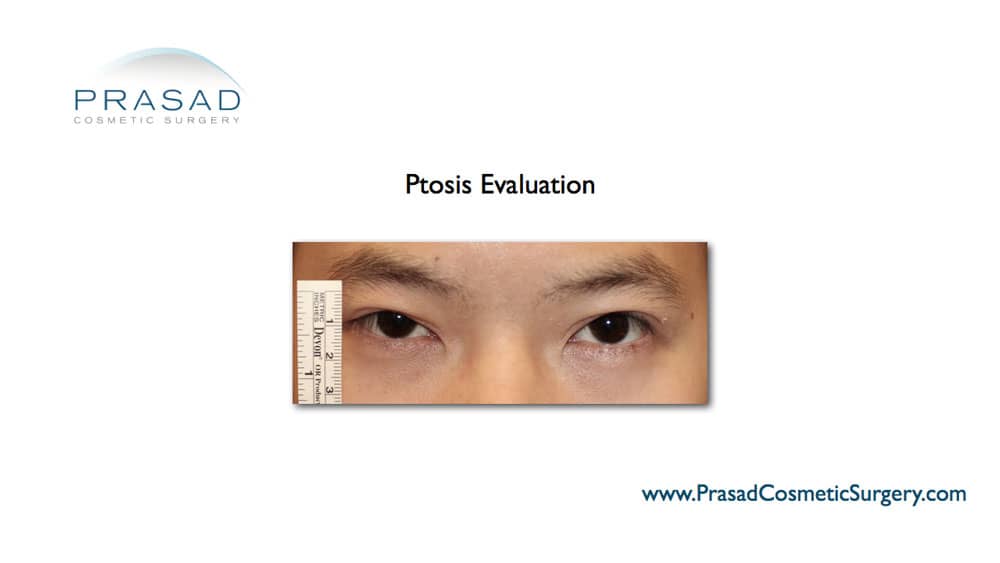
How Do You Fix Droopy Eyelid?
There are different surgical procedures to address ptosis. To address eyelid ptosis, one of the more frequent procedures I perform is to shorten a muscle from behind the eyelid called Mueller’s muscle. This procedure, called conjunctival muellerectomy is done for mild eyelid ptosis. I often perform this procedure at the same time when I perform cosmetic blepharoplasty.
In other situations, I perform surgery directly on the levator muscle. These procedures include levator advancement, and levator resection. Typically this is done when the levator muscle function is good. For more severe ptosis cases where there is little to no function of the levator muscle, I create a connection to the muscle that lifts the brow called the frontalis muscle, in a procedure called a frontalis sling. It is challenging to achieve the optimal height, contour, and symmetry in ptosis surgery.
I often have the patient sit up during surgery so I can see how they look with gravity. I routinely perform eyelid surgery under local anesthesia with LITE IV sedation. My patients recover much faster than they would under general anesthesia, so they typically go back to work in about 1 week

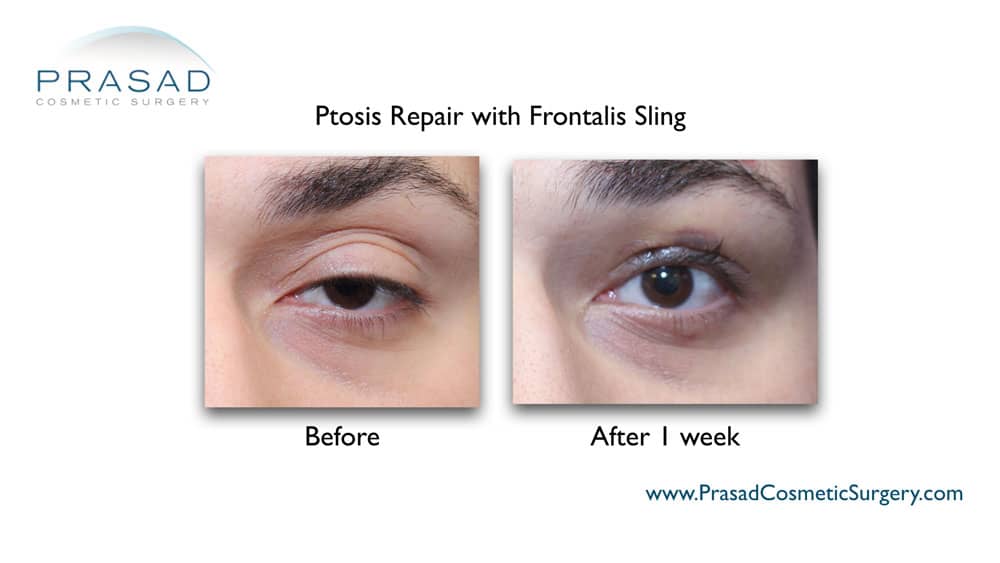
Upper Eyelid Hollowness Treatment
A condition that may appear like the eyelids are drooping often seen with eyelid ptosis, is hollowing above the upper eyelids. This appearance can be seen after too much fat removal in a previous cosmetic upper eyelid surgery. This appearance can also be due to fat and bone volume loss due to aging. I find that enhancing the volume above the upper eyelid can restore the character of the eyes and improve a drooping appearance. I prefer to use a hyaluronic acid filler placed precisely with a cannula for this area. I have performed fat grafting for this area before the hyaluronic acid fillers were an option. Fat grafting is less predictable, and prone to complications, which are difficult to manage. I like the predictability, precision, safety, and reversibility of hyaluronic acid fillers, which can be done in my exam room as opposed to in the operating room where fat grafting is performed.
The appearance of drooping eyes is a common issue caused by different conditions. The art is first understanding the cause, then aiming for an outcome with a natural aesthetic. A proper evaluation by a specialist to identify the specific anatomic factors, which can be skillfully addressed, are critical for a successful result.
